

For our final post, we wanted to share about a unit on which we have actually collaborated! Carole, our fabulous fine arts teacher Carrie Howes, and myself came together to create an integrated science unit. While it is still a work in progress, the students (and teachers) have learned a lot and are incredibly passionate too!
The beginning:
On the same day, both Carrie and I talked with Carole about presenting at the HOT Schools Summer Institute. This week-long experience brings together other HOT school teachers, artists and many others for incredible learning opportunities. This summer, the focus is STEAM. The idea of collaboration between the Library, Art room, and classroom was born. As we began planning, GID was a natural fit. The three of us met several times during lunch breaks to brainstorm and lay the foundation for this work.
Carole shared about the concepts and curricular areas that her class would be focusing on. I suggested and found a copy of The Calder Game book to spark the curiosity of the students. Always on the lookout for  STEAM connections, I also wondered if sphero robots could add to this unit of study with their connection to motion. Carrie began to research the works of Alexander Calder and connected the concepts of the mobiles to balance and motion, the underlying curricular theme. She also collected and gathered materials for the students to use when creating their group mobiles. Carole created the student groupings and loved every moment of researching the art, science, and technology that would make this unit come to life for the first and second grade students. In addition, our technology teacher Bridgette Schlicker has been partnering with us. We became so excited about this unit and will indeed be sharing it during the HOT Schools Institute!
STEAM connections, I also wondered if sphero robots could add to this unit of study with their connection to motion. Carrie began to research the works of Alexander Calder and connected the concepts of the mobiles to balance and motion, the underlying curricular theme. She also collected and gathered materials for the students to use when creating their group mobiles. Carole created the student groupings and loved every moment of researching the art, science, and technology that would make this unit come to life for the first and second grade students. In addition, our technology teacher Bridgette Schlicker has been partnering with us. We became so excited about this unit and will indeed be sharing it during the HOT Schools Institute!
As with anything, the GID process for this unit has not been linear. One of the hallmarks of HOT schools is student voice and choice. So while some of this unit could be planned, at times we worked flexibly as students helped decide the directions we would go.
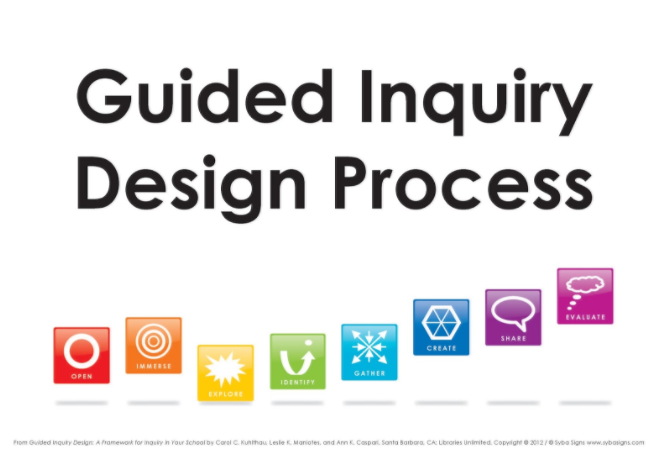
Here are the steps in the GID process and how they worked with this unit.
Open:
Carole used several items for the Open phase. The class read aloud is The Calder Game. Together with biographical information on Alexander Calder and pieces of Calder’s art, students were immediately hooked!
Immerse:
Much of the immerse phase took place in the classroom. Students watched YouTube videos of Alexander Calder’s mobiles, museum exhibits, Calder working in his studio, and his circus. Students selected a focal art piece to display in the classroom and spent time looking at Calder’s stabiles. In library class, I had curated as many websites as possible using Symbaloo and students explored these sites. All of this added to their knowledge of Calder and his work. Throughout, the ideas of balance and motion were discussed, although they were not the focus yet.
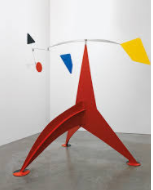
Image from idaaf.com
Explore:
Again, much of the explore happened in the classroom. Students made stabiles out of paper with partners. They explored balance scales and weights. While reading The Calder game, students drew a five piece
mobile. Extending this further, students then added a numeric value to the pieces to make a balanced equation. An Art Farm performance of the Little Apple Circus continued to expand students’ knowledge and understanding of balance and motion concepts.
 In library, we worked with Sphero robots to gain experience with moving them around the room, first using the app to just drive the Spheros and then using the Tickle app which utilizes coding to move the robots.
In library, we worked with Sphero robots to gain experience with moving them around the room, first using the app to just drive the Spheros and then using the Tickle app which utilizes coding to move the robots.
Identify:
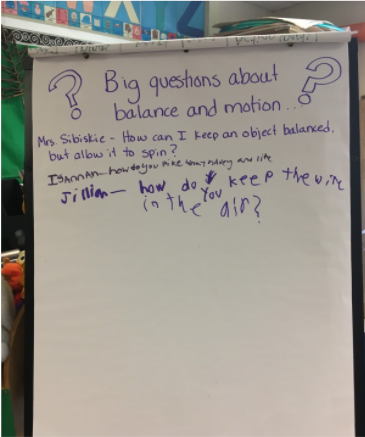 The identify phase has probably been the most difficult. These are first and second grade students and they have constant questions and also this unit almost has two areas of focus, balance and motion and Calder. In library, we created a list of questions about Calder together and then learned as much as we could. I don’t think that these questions were as deep as they could have been. However, I believe that when Carole and her students began to think about balance and motion concepts, these became those deeper types of questions. This works well because the balance and motion is the major focus of the unit.
The identify phase has probably been the most difficult. These are first and second grade students and they have constant questions and also this unit almost has two areas of focus, balance and motion and Calder. In library, we created a list of questions about Calder together and then learned as much as we could. I don’t think that these questions were as deep as they could have been. However, I believe that when Carole and her students began to think about balance and motion concepts, these became those deeper types of questions. This works well because the balance and motion is the major focus of the unit.
Gather:
In the library, the classroom, and in technology class students collected all kinds of information. We used this Gather phase to integrate some information literacy, such as citing sources and note taking.
Create:
A variety of creations are happening with this unit. Carole began to have her students create Calder curations. She asked them to select three favorite pieces using Safe Search. Students then created a Google doc with an explanation and reflection of each art piece. This was begun in the classroom and continued in library. The Eli Whitney Museum is nearby and students used kits from the museum to build a balance and motion circuses. Mobiles are being created collaboratively with inspiration and information from our art teacher as students focus on craftsmanship. These 2D mobiles will (we hope) be made into 3D objects to use in the share that we are imagining.

Collaborative Mobiles
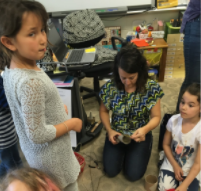
Carrie Howes, art teacher, creating mobiles.
Share:
At this time, we are planning to create the “Four Ring Circus” with each group programing a Sphero robot which will be used to show balance and motion concepts. They will also use the elements from their 2D mobiles and translate them into 3D objects in the ring for the “circus act” to engage with. This work will be shared in part at an Assembly (which are held each Friday afternoon) and in whole for the school wide Share Fair.
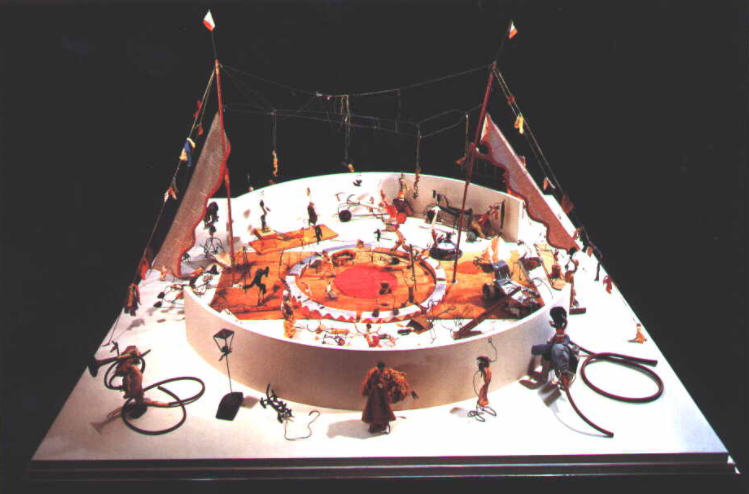
Image from: superradnow.wordpress.com
Evaluate:
The students will have a rubric to complete for each “circus act”. They will search for evidence of balance and motion, Calder inspirations, and technical use of the Sphero as they watch each performance.
Final thoughts
From the classroom: If time allows (we are getting very close to the end of the year!) the students will be able to design an individual balance and motion experiment to further test one of their “big questions” about this concept. By combining GID and STEAM elements together, this project has become totally purposeful and engaging for everyone involved. All learners were able to shine in a strength area with their group as there were so many styles of learning that were needed for the different stages of learning. So much of the work was hands on and experimental which also raised engagement. The kids were using the language of the 4Cs of collaboration, communication, critical thinking, and creativity to describe this work. Students had to push their thinking further in each step. It was astonishing that not one group struggled to balance their mobiles. Because of the groundwork, they have a great conceptual understanding of how to construct a balanced mobile!
From the library: I have loved every minute of this process. While there are days when we literally go by the seat of our pants, the learning has been amazing. Echoing Carole, the student engagement has been so much fun to watch. In the future, I would like to be more intentional about the information literacy skills that are embedded and also assess those more. I would also like to include more student reflection throughout.
We will update this post with pictures of the circus that I am confident will take place!!!
Thank you for learning with us!
Jenny and Carole
Love the Calder example and making the connection to STEAM! What a fun way to explore balance and weight. We’d love to see the follow up photos! Thank you Jenny and Carole! I think many age levels could use this example and if the students drive the questions, it would increase the level of learning for age appropriateness! How exciting!
Leslie